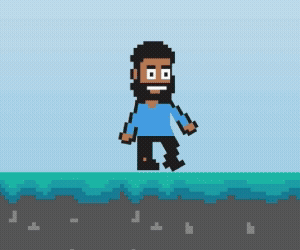Nvidia today staked its claim on what it calls the next trillion-dollar market: physical AI.
At the Conference on Robot Learning (CoRL) in Seoul, the tech giant unveiled a new stack of models and hardware designed to help robots perceive, reason and act in the physical world.
While ‘robotics’ typically refers to the machines themselves – from industrial arms to drones and autonomous vehicles – physical AI goes a step further by giving those machines intelligence: the ability to perceive their surroundings, make decisions, and adapt in real time.
At today’s Seoul event, the world’s most valuable company (by market cap) unveiled a trio of foundation models aimed at solving robotics’ toughest challenges.
Newton, co-developed by Nvidia, Disney Research and DeepMind, focuses on manipulation, teaching robots to grasp and handle objects. The model is already being adopted by Zurich’s Robotic Systems Lab, the Technical University of Munich and Peking University.
Nvidia also announced an updated version of GR00T (1.6), which is targeted at humanoid robots, helping to coordinate arms, joints and mobility.
The third model, Cosmos, is an open-source reasoning model described as a “brain” for robots, bringing vision-language-action capabilities so machines can extrapolate to unfamiliar environments — much as large language models do with text.
All three models run on Jetson Thor, the new robotics platform released last month, powered by Nvidia’s Blackwell chips.
The tech giant also announced that Newton physics engine is now integrated into Isaac Lab (Nvidia’s robotics / robot learning framework) to give researchers the tools to train more realistic, efficient, and transferable robot behaviours in virtual environments.
To address safety, Nvidia is extending its Halos framework – first built for autonomous vehicles – into robotics, using high-fidelity simulation for training and validation before real-world deployment.
Why simulation is key
Simulation, Rev Lebaredian, vice president of Omniverse and Simulation Technology stressed in a pre-announcement press briefing last Friday, is essential to making physical AI possible.
Just as large language models are trained on vast text corpora, robots need equally broad and diverse datasets rooted in the physical world. Collecting that data through sensors alone is impractical, so Nvidia uses physics-based simulation to generate training data, replicate real-world conditions and test edge cases.
Lebaredian added that the same approach underpins the company’s chip design process, where every processor is simulated extensively before fabrication.
“Without simulation, there’s no way to create or validate these AI systems safely,” he said. “It lets us train on scenarios that would be too costly, too rare or too dangerous to reproduce in the real world – and it’s the only way to ensure the robot brain is a good one before it ever touches hardware.”
The company added that safety must be baked in at every level of the robotics stack, not treated as an afterthought.
“With Halos we’re applying the same rigorous safety principles we developed for autonomous driving to general-purpose robots,” said Lebaredian.
“That means testing in simulation before deployment, building multiple safeguards into the system, and ensuring functional safety is addressed from top to bottom,” he added.
Nvidia claims that humanoid robots represent the “superset” of all robotic forms, and that breakthroughs here will cascade into industrial arms, mobile bots and logistics systems. By open-sourcing Cosmos and emphasising simulation as the backbone of training, the company hopes to rally the global robotics community around its platform.
“Just as ChatGPT unlocked knowledge work for every industry, physical AI will unlock the next wave of productivity in the physical world.”
Nvidia’s physical AI stack at a glance:
– Newton → Foundation model for manipulation, co-developed by Nvidia, Disney Research and DeepMind. Helps robots grasp, handle and interact with objects. Early adopters include Zurich’s Robotic Systems Lab, the Technical University of Munich and Peking University.
– Groot (v1.6) → Model for humanoid robots, designed to coordinate arms, joints and mobility so robots can move and act fluidly.
– Cosmos → Open-source reasoning model (vision-language-action) described as a “brain” for robots, enabling generalisation to unfamiliar environments.
– Jetson Thor → Nvidia’s new robotics compute platform, built on Blackwell chips, offering the power needed to run foundation models in real time.
– Halos → Nvidia’s safety framework, originally developed for autonomous vehicles, now extended to robotics with rigorous simulation and safeguards built across the stack.


